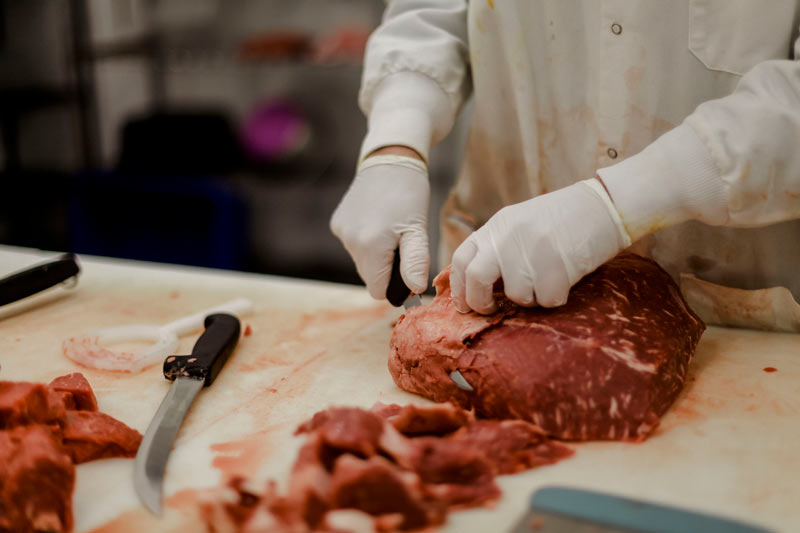Browse for quality meats at Bagley Meat Market Edwardsville IL for the best choices.
Browse for quality meats at Bagley Meat Market Edwardsville IL for the best choices.
Blog Article
Exactly How to Choose the Perfect Cut of Meat From a Trusted Meat Market
Choosing the perfect cut of meat from a relied on meat market requires a thoughtful strategy that balances top quality, culinary function, and budget. Comprehending the various types of meat and their corresponding cuts is necessary, as is engaging with your butcher to get understandings into sourcing and prep work. Observing attributes such as shade, appearance, and marbling can even more lead your decision. As you take into consideration these elements, it ends up being clear that the subtleties of your choice can considerably affect the outcome of your dish, motivating a deeper expedition of the standards that really issue.
Recognizing Meat Cuts


As an example, the tenderloin is treasured for its buttery texture and minimal connective tissue, making it excellent for fast food preparation techniques such as grilling or pan-searing. On the other hand, tougher cuts like the brisket or shank benefit from sluggish cooking techniques to damage down collagen, generating abundant and tasty outcomes.
Furthermore, the fat web content of a cut plays a critical function in taste profile and wetness retention throughout food preparation. Cuts with higher fat web content, such as ribeye, supply an even more durable flavor, while leaner options, like sirloin, may require mindful preparation to stay clear of dryness (bagley meat market edwardsville il). Understanding these subtleties enables for informed options that boost culinary productions, ensuring that each dish showcases the very best high qualities of the chosen meat
Aspects to Consider
When picking the perfect cut of meat, several crucial factors enter play that can dramatically affect the last dish. First and leading, take into consideration the sort of meat you want-- beef, pork, lamb, or chicken-- as each offers distinct flavors and structures. The details cut within that group is just as important; as an example, ribeye delivers rich marbling, while tenderloin gives a lean, buttery structure.
Another factor is the cooking approach you plan to use. Cuts appropriate for barbecuing, such as T-bones or sirloins, vary from those much better fit for slow cooking, like chuck roasts or shanks. Additionally, quality is critical; constantly choose meat with a lively color and firm appearance, signifying quality and appropriate handling.
Costs cuts might use outstanding preference, but there are additionally cost-efficient alternatives that, when prepared correctly, can yield delicious outcomes. Stabilizing these elements will certainly help you choose the perfect cut for your cooking demands.
Inquiries to Ask Your Butcher
A butcher's know-how can be important when selecting the ideal cut of meat for your culinary ventures (bagley meat market edwardsville il). To maximize this source, take into consideration asking in-depth concerns that can lead your options. Beginning by inquiring regarding the source of the meat. Recognizing where it originates from can give insights into its quality More Help and taste profile.
Next, ask concerning the various cuts available for the sort of meat you like. A knowledgeable butcher will explain the nuances of each cut, helping you pick one that matches your food preparation technique and desired end result. Do not hesitate to ask about the finest cooking methods for a certain cut; butchers commonly have pointers that can improve your meal.
It's also prudent to ask regarding the meat's quality. Ask about the shipment routine and how usually the meat is replenished. This will offer you self-confidence in the high quality of what you are buying. Ask for recommendations based on your individual taste choices. A good butcher will be eager to share their experience and suggest cuts that will delight your taste buds. Engaging your butcher with these concerns can considerably enhance your meat option experience.
Identifying Top Quality Meat

Appearance is an additional important element; high quality meat ought to feel firm and a little resilient to the touch. Avoid any click for more cuts that really feel slimed or exceedingly dry, as these can suggest putridity or inappropriate storage. Additionally, odor plays a vital role; fresh meat ought to have a tidy, neutral fragrance, while any type of repulsive or sour smells are warnings.
Finally, take into consideration the source. Investing in from a respectable meat market, where the meat's origin is known, can ensure greater quality criteria. By concentrating on these indicators-- color, marbling, texture, odor, and source-- you can with confidence pick cuts that will certainly boost your food preparation and eating experience.
Cooking Methods for Each Cut
Selecting the appropriate cooking technique is critical for maximizing the taste and inflammation of each cut of meat. Different cuts have distinct qualities that determine the most ideal food preparation techniques.
For tender explanation cuts, such as filet mignon or ribeye, dry warmth techniques like grilling, broiling, or pan-searing are suitable. On the other hand, tougher cuts, such as chuck or brisket, advantage from wet warm methods, including braising or slow-moving cooking.
Pork chops and chicken busts are versatile and can be prepared making use of both completely dry and wet techniques. While cooking or roasting can yield tasty outcomes, poaching or sautéing can preserve wetness and tenderness. For lamb, methods like toasting or braising are advised, as they complement the meat's robust flavor.

Conclusion
Finally, selecting the ideal cut of meat from a reliable meat market demands an extensive understanding of meat cuts and consideration of different factors, consisting of resource, high quality, and food preparation methods. Involving with the butcher with targeted inquiries can produce valuable understandings and recommendations tailored to details culinary needs. Focusing on both quality and spending plan will improve the overall gastronomic experience, making sure that the chosen cut fulfills assumptions in both flavor and preparation.
Report this page